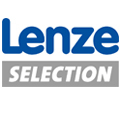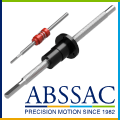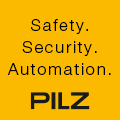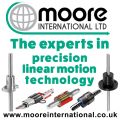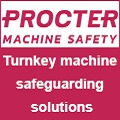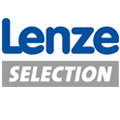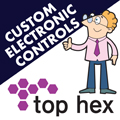
Posted to News on 17th Nov 2006, 22:49
Monitors and embedded PCs withstand marine environment
Developed to meet stringent marine industry standards, a new range of compact, modular, rugged LCD monitors and embedded PCs is being launched, offering ship suppliers and end customers numerous new features and technical benefits.
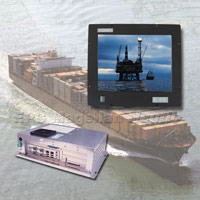
The LCD displays and PCs for on-board ship applications meet stringent E10 and DIN/EN 60945 company classification standards for the marine industry. Developed by German company Lauer Electronic Systems, the range, which includes monitors, embedded PCs and panel PCs, is now available through UK agent MAC Solutions (UK) Ltd.
Rugged and compact, the monitors and PCs have their own in-built vibration damping elements that ensure that hard drives and internal compact flash cards can perform their tasks without being affected by vibration or a system breakdown. The display fronts have also been modified using a single aluminium structure. In addition, the monitors incorporate a special 'dimming' feature for night-time operations.
Compatibility testing
The Nautic range exceeds all the necessary electromagnetic compatibility tests for the marine industry and is resistant to jamming and other radio frequency interference. Units are tested for: compass safety distance; noise emissions; shock and vibration resistance in all axes; resonant frequency; and resistance to temperature fluctuations and damp conditions.
Andy Thorogood, Sales Manager at MAC Solutions (UK) Ltd, says: "Ships today possess a variety of complex information and data storage systems. On-board computer systems monitor a variety of individual functions around the ship. On the bridge, for example, radars and electronic mapping systems help the crew navigate routes. Individual alarm systems, fire alarm systems and tank displays are needed elsewhere on the ship to help the crew maintain the vessel. The demands placed on these information systems are similar to those placed on industrial systems, but are usually more complex.
"Each system on board must be able to perform tasks without failure and overriding guiding systems must provide all the required information swiftly and reliably, whether in the machine control room or on the bridge."
Latest technology
The technology used on ships complies with world-wide standards: Ethernet (110/1100MBit) as a data highway; field-bus systems on-site; and decentralised peripheral equipment for controlling actuators and for receiving/storing information from sensors that are located in all areas of the ship. The data is processed in micro-controlled or PC-based systems and distributed around the ship accordingly.
At the end of 2005, working on a contract for one of the world's largest ship suppliers, Lauer and German company SAM Electronics (and a subsidiary of L-3 Communications) set out to design and develop specific monitors, panel PCs and embedded PCs for use on ships.
Joachim Salm is key Account Manager, Maritime Operations, at Lauer. He explains some of the demands placed on the monitors and PCs: "The design of the computers had to provide a platform with greater processor performance for application automation. Rotating parts were to be dispensed with as far as possible, including fans, and low power consumption was a requirement. For the ship supplier, each ship is unique and so the voltage supply potential had to be provided separately for 230V and 24V."
Hardware demands
Demands placed by individual ships vary considerably and so a modular system was required that could be used with and without hard drives. To meet this requirement, rather than specially designed hard drives, Lauer's units incorporate internal and external compact flash cards that can be used to store data and which also provide excellent shock and temperature resistance.
Space for PCI plug-in cards was needed for communication and for future expansion of the systems. Many systems are required for upgrading ships that have already been fitted out. In this retrofit scenario, the compact size of the equipment was also important. The customer also wanted displays which offered a 'dimming' capacity that could be set to complete darkness (down to zero) for night operations at sea.
The monitors come in various sizes: 15, 17, 19, 21 and 23inch. The ability to use the same technology for each monitor size was also important and so a modular design approach was taken by Lauer and SAM Electronics.
Touchscreen features were also important to the end customer and so this technology had to be incorporated during development. The displays also had to take account of the availability for retrofit and the different voltage supplies required on the ship.
Company classification regulations, summarised in the guidelines in accordance with E10 and the DIN/EN 60945 regulations, also had to be met. Availability of components was an important decision-making factor, which is more important in the shipbuilding industry than in general industrial applications.
Reliability of the systems was also a key factor. Initial design and development work began on Lauer's 'EPC-PM Nautic' range at the end of 2005. Celeron M processor technology was well suited to the task. Lauer had experience of using these processors, which can be used on an embedded board with a long availability period. Other system features included a number of interfaces:
- 2 x PS/22
- VGA
- 1 x RS232/485
- 2 x RS232
- 1 x parallel
- 2 x Ethernet 10/100 Mbit
- 4 x USB 2.0
- 1 x external CFC slot
- 2 x PCI expansion slots.
Once equipped with these components the systems were then subjected to various checks in accredited testing laboratories.
Testing
DIN/EN 60945 standards require a number of tests, including electromagnetic compatibility. Resistance to jamming and radio frequencies also need to be checked. Tests in respect of compass safety distance and noise emissions were conducted. Further tests included shock and vibration resistance in each axes. Particular attention was focused on the resonant frequency. The same equipment was simultaneously tested for its susceptibility to temperatures and damp.
The test requirements forced Lauer to design its own vibration damping elements. These ensured that the hard drives and internal CF cards can perform their tasks in the systems without being affected by vibrations or breakdowns. The display fronts were also modified using a single structure made of aluminium. Lauer was also able to conduct these tests in advance in its own laboratories. Having its own vibration testing systems, climatic test cabinets and electromagnetic compatibility testing was a huge advantage during the design and product development.
Following conclusion of the tests, Lauer was issued with all the classification company certificates. The systems have been in operation for over two years now without any problems.
Software demands
These systems are assembled from modular components which include the MT monitor using colour TFT displays from 15 to 23 inches working from 24V/230V and with or without resistive touchscreens. The 'EPC-PM Nautic' computer uses an Intel Celeron M 1.3 GHz and an Intel 82855GME chipset. A choice of operating systems can be used depending on configuration. For use with compact flash storage, Microsoft Windows embedded XP is used, while for hard disk-based systems, Microsoft Windows XP Professional in German or English is installed or Windows 2000 multi-language in German, English, French, Italian or Spanish.
For more information about the Lauer Electronic Systems range of monitors and PCs, go to www.mac-solutions.net.
Unit 6-7 Kingfisher Business Park
Arthur Street
B98 8LG
UNITED KINGDOM
+44 (0)1527 529774






